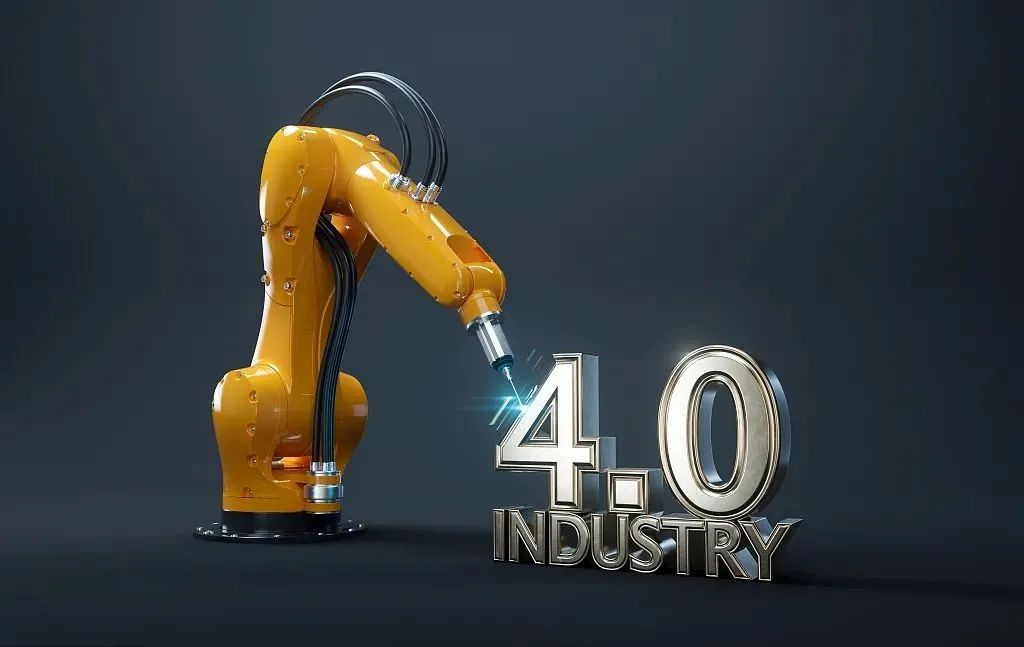
Industrial software is the “brain” of modern industrial equipment and a powerful tool for the manufacturing industry to implement the industrial internet and transform into intelligent manufacturing. Written by | China Industrial NewsIndustrial software refers to software specifically designed for the industrial sector, including systems, applications, middleware, and embedded software. Industrial software is generally divided into two types: embedded software and non-embedded software. Embedded software is used in controllers, communication, and sensing devices for data collection, control, and communication; non-embedded software is installed on general-purpose computers or industrial control computers for design, programming, processes, monitoring, and management. Especially in embedded software, which is applied in military electronics and industrial control, the requirements for reliability, safety, and real-time performance are particularly high, necessitating strict inspection and evaluation. It is also important to emphasize design-related software, such as AutoCAD and CAE. Industrial software plays a crucial role in product design, complete equipment design, factory design, and industrial system design, significantly enhancing the R&D, manufacturing, and production management levels of industrial enterprises, improving industrial management performance and design efficiency, effectively saving costs, and achieving visual management,making it the “brain” of modern industrial equipment and a powerful tool for the manufacturing industry to implement the industrial internet and transform into intelligent manufacturing. The leading global industrial software vendors include Dassault Systèmes, Siemens Digital Industries Software, Autodesk, PTC, Synopsys, Cadence, AVEVA, ANSYS, Altair, Hexagon, ESI, Zuken, Altium, and Aras. Below, we introduce the eight major industrial software powerhouses in the world:United StatesThe United States is one of the leading countries in industrial software globally. In fact, the largest industrial software company in the U.S. is Lockheed Martin. In the 1960s, hand-drawn drawings could no longer meet the increasingly complex product demands, prompting aerospace giants like Boeing, Lockheed, and NASA to develop industrial software to replace manual drafting. This was because computer technology could better express product requirements and eliminate the need for human-driven physical devices.Especially during the Cold War, the U.S. sought to reduce expensive military software costs by promoting military-civilian integration, and Lockheed seized the opportunity to enter the industrial software field. It is worth mentioning that the industrial software developed during this period was primarily for internal use, but many were later commercialized for profit. Notable examples still active in the market include CADAM developed by Dassault with Lockheed’s investment; UG developed by McDonnell Douglas; and ANSYS developed by Westinghouse Electric’s Space Nuclear Laboratory.The U.S. places great importance on the development of software and industrial software. For example, NASA, in collaboration with GE and Pratt & Whitney, developed the NPSS software over 20 years, embedding extensive engine design knowledge, methods, and technical parameters, allowing for a complete design cycle of an aircraft engine in just one day. Additionally, the entire development process of the Boeing 787 utilized over 8,000 types of industrial software, of which fewer than 1,000 were commercial software; the remaining 7,000 were proprietary software accumulated by Boeing over the years, not available for external sale, containing Boeing’s core engineering technology.
Written by | China Industrial NewsIndustrial software refers to software specifically designed for the industrial sector, including systems, applications, middleware, and embedded software. Industrial software is generally divided into two types: embedded software and non-embedded software. Embedded software is used in controllers, communication, and sensing devices for data collection, control, and communication; non-embedded software is installed on general-purpose computers or industrial control computers for design, programming, processes, monitoring, and management. Especially in embedded software, which is applied in military electronics and industrial control, the requirements for reliability, safety, and real-time performance are particularly high, necessitating strict inspection and evaluation. It is also important to emphasize design-related software, such as AutoCAD and CAE. Industrial software plays a crucial role in product design, complete equipment design, factory design, and industrial system design, significantly enhancing the R&D, manufacturing, and production management levels of industrial enterprises, improving industrial management performance and design efficiency, effectively saving costs, and achieving visual management,making it the “brain” of modern industrial equipment and a powerful tool for the manufacturing industry to implement the industrial internet and transform into intelligent manufacturing. The leading global industrial software vendors include Dassault Systèmes, Siemens Digital Industries Software, Autodesk, PTC, Synopsys, Cadence, AVEVA, ANSYS, Altair, Hexagon, ESI, Zuken, Altium, and Aras. Below, we introduce the eight major industrial software powerhouses in the world:United StatesThe United States is one of the leading countries in industrial software globally. In fact, the largest industrial software company in the U.S. is Lockheed Martin. In the 1960s, hand-drawn drawings could no longer meet the increasingly complex product demands, prompting aerospace giants like Boeing, Lockheed, and NASA to develop industrial software to replace manual drafting. This was because computer technology could better express product requirements and eliminate the need for human-driven physical devices.Especially during the Cold War, the U.S. sought to reduce expensive military software costs by promoting military-civilian integration, and Lockheed seized the opportunity to enter the industrial software field. It is worth mentioning that the industrial software developed during this period was primarily for internal use, but many were later commercialized for profit. Notable examples still active in the market include CADAM developed by Dassault with Lockheed’s investment; UG developed by McDonnell Douglas; and ANSYS developed by Westinghouse Electric’s Space Nuclear Laboratory.The U.S. places great importance on the development of software and industrial software. For example, NASA, in collaboration with GE and Pratt & Whitney, developed the NPSS software over 20 years, embedding extensive engine design knowledge, methods, and technical parameters, allowing for a complete design cycle of an aircraft engine in just one day. Additionally, the entire development process of the Boeing 787 utilized over 8,000 types of industrial software, of which fewer than 1,000 were commercial software; the remaining 7,000 were proprietary software accumulated by Boeing over the years, not available for external sale, containing Boeing’s core engineering technology. Industrial software is the foundation of future strategic emerging industries; without industrial software, intelligent manufacturing is merely a fantasy. To this day, nearly every industrial product in the world is a significant result of industrial software.The U.S. was the first country to develop CAE, starting with NASA. With national funding support, NASA developed the famous finite element analysis software Nastran. In 1971, MSC improved the Nastran program, thus becoming the pioneer of simulation software in the U.S.Most of the world’s top foundational software, such as CAD and CAE, is held by companies in Europe and the U.S. When it comes to CAD, many people think of Autodesk’s AutoCAD; however, besides Autodesk in the U.S., France’s Dassault, Germany’s Siemens, and the U.S.’s PTC are also leading CAD companies, collectively holding over 90% of their domestic CAD market share. Notably, Ansys, Altair, and MSC essentially monopolize the CAE field.According to data from 2020, the global industrial software market reached $435.8 billion. Particularly, the three giants of EDA software—Cadence, Synopsys, and Mentor (a subsidiary of Siemens)—hold 90% of the global market share, with a staggering 95% share in the Chinese market.GermanyGermany’s software industry is the leader in Europe, both in terms of customer base and producers, with the highest number of software companies in EU countries. Globally, Germany has consistently maintained its position as one of the largest software suppliers and solution providers. The software industry is a crucial component of Germany’s information and communication technology (ICT) sector.There are approximately 30,000 companies in Germany dedicated to software development and sales, which once accounted for about 46% of the total number of companies in the ICT sector.The main characteristic of Germany’s software companies is their “youth,” with 67% established in the 1990s, most emerging from universities, research institutions, and large enterprises.Data indicates that the primary export market for Germany’s major software companies is EU countries, while auxiliary software companies focus on exports to North America and Asia.In terms of software development methods, Germany’s major software companies and auxiliary software companies exhibit distinct characteristics. 73% of major software companies engage in the independent development of original software, while 87% of auxiliary software companies procure foundational software and improve it for their own use. Statistics show that two-thirds of the software used by auxiliary software companies is standard software.The German government places great importance on encouraging IT industry policies, believing that the development of the IT industry is of strategic significance for national economic and social development. The state of the IT industry’s development determines Germany’s external competitiveness, the sustainability of its economy, and the availability of sufficient employment opportunities in the future. To encourage the development of the IT industry, the German government has introduced a series of policy measures at various levels, including: “Information and Communication Technology 2020 – Research for Innovation” plan, “Innovation and Employment in the 21st Century Information Society” action plan, “Information Society Germany 2006” action plan, “Information Society Germany 2010” action plan, “Everyone Uses the Internet” ten-point plan, “IT for Education: Don’t Cut Off Internet Access” action plan, “Multimedia” plan, and “Small and Medium Enterprises Information and Communication Technology Innovation Initiative” incentives.The largest industrial software company in Germany is SAP SE. Although it is just a software company, it leads Germany’s “Industry 4.0” strategy. SAP is the world’s largest provider of enterprise management and collaborative e-commerce solutions and the third-largest independent software vendor globally. SAP is also the largest supplier of business applications, enterprise resource planning (ERP) solutions, and independent software, with a market share exceeding 30% in global enterprise application software. Notably, over 80% of the Fortune 500 companies use SAP’s management solutions. Since 1988, SAP has been listed on several stock exchanges, including the Frankfurt Stock Exchange and the New York Stock Exchange.
Industrial software is the foundation of future strategic emerging industries; without industrial software, intelligent manufacturing is merely a fantasy. To this day, nearly every industrial product in the world is a significant result of industrial software.The U.S. was the first country to develop CAE, starting with NASA. With national funding support, NASA developed the famous finite element analysis software Nastran. In 1971, MSC improved the Nastran program, thus becoming the pioneer of simulation software in the U.S.Most of the world’s top foundational software, such as CAD and CAE, is held by companies in Europe and the U.S. When it comes to CAD, many people think of Autodesk’s AutoCAD; however, besides Autodesk in the U.S., France’s Dassault, Germany’s Siemens, and the U.S.’s PTC are also leading CAD companies, collectively holding over 90% of their domestic CAD market share. Notably, Ansys, Altair, and MSC essentially monopolize the CAE field.According to data from 2020, the global industrial software market reached $435.8 billion. Particularly, the three giants of EDA software—Cadence, Synopsys, and Mentor (a subsidiary of Siemens)—hold 90% of the global market share, with a staggering 95% share in the Chinese market.GermanyGermany’s software industry is the leader in Europe, both in terms of customer base and producers, with the highest number of software companies in EU countries. Globally, Germany has consistently maintained its position as one of the largest software suppliers and solution providers. The software industry is a crucial component of Germany’s information and communication technology (ICT) sector.There are approximately 30,000 companies in Germany dedicated to software development and sales, which once accounted for about 46% of the total number of companies in the ICT sector.The main characteristic of Germany’s software companies is their “youth,” with 67% established in the 1990s, most emerging from universities, research institutions, and large enterprises.Data indicates that the primary export market for Germany’s major software companies is EU countries, while auxiliary software companies focus on exports to North America and Asia.In terms of software development methods, Germany’s major software companies and auxiliary software companies exhibit distinct characteristics. 73% of major software companies engage in the independent development of original software, while 87% of auxiliary software companies procure foundational software and improve it for their own use. Statistics show that two-thirds of the software used by auxiliary software companies is standard software.The German government places great importance on encouraging IT industry policies, believing that the development of the IT industry is of strategic significance for national economic and social development. The state of the IT industry’s development determines Germany’s external competitiveness, the sustainability of its economy, and the availability of sufficient employment opportunities in the future. To encourage the development of the IT industry, the German government has introduced a series of policy measures at various levels, including: “Information and Communication Technology 2020 – Research for Innovation” plan, “Innovation and Employment in the 21st Century Information Society” action plan, “Information Society Germany 2006” action plan, “Information Society Germany 2010” action plan, “Everyone Uses the Internet” ten-point plan, “IT for Education: Don’t Cut Off Internet Access” action plan, “Multimedia” plan, and “Small and Medium Enterprises Information and Communication Technology Innovation Initiative” incentives.The largest industrial software company in Germany is SAP SE. Although it is just a software company, it leads Germany’s “Industry 4.0” strategy. SAP is the world’s largest provider of enterprise management and collaborative e-commerce solutions and the third-largest independent software vendor globally. SAP is also the largest supplier of business applications, enterprise resource planning (ERP) solutions, and independent software, with a market share exceeding 30% in global enterprise application software. Notably, over 80% of the Fortune 500 companies use SAP’s management solutions. Since 1988, SAP has been listed on several stock exchanges, including the Frankfurt Stock Exchange and the New York Stock Exchange. Although SAP previously ranked over 400 in the Fortune 500, over 80% of the companies in the Fortune 500 have been its clients. “Industry 4.0” is centered around CPS (Cyber-Physical Systems) and employs three integrations (vertical integration, end-to-end integration, and horizontal integration) as a means to achieve a highly automated, highly digitalized, and highly networked intelligent manufacturing model, resulting in significant leaps in efficiency, cost, quality, and personalization.Additionally, FAUSER, established in 1994, is a top global APS (Advanced Planning and Scheduling) software company, with its products positioned in the intelligent planning and scheduling of “Industry 4.0.” FAUSER’s products are widely used by thousands of companies, including Lockheed Martin, British Aerospace, Airbus, BMW, Daimler Chrysler, ThyssenKrupp, and Kohler, becoming the command system for these companies’ “intelligent manufacturing.”Another renowned giant in Germany, Siemens, is also one of the largest industrial software giants globally and a leading automation powerhouse. Siemens manufactured the world’s first 800kV ultra-high voltage direct current transformer, becoming a core device for ultra-high voltage transmission. Siemens provided automation systems and PVSS construction solutions for the world’s largest particle accelerator—the Large Hadron Collider, being the only industrial developer and sponsor of the project.JapanAs the world’s third-largest economy, Japan was once second only to the U.S. in software sales, with outstanding embedded software capabilities. Independent research institutions have ranked Japan’s software quality and productivity far above that of the U.S. However, Japan’s software products and services still lack a global presence, primarily due to the significant gap between strong software development capabilities and weak product innovation capabilities.Michael Cusumano refers to this contradiction as the “myth of the Japanese software industry.” Most Japanese IT companies are concentrated in industries with low software density. The reason the U.S. software industry outperforms Japan’s is due to the U.S.’s first-mover advantage, driven by its R&D policies and the advanced development of computer science education at the university level, a trend that continues today. For instance, one-fifth of software developers in the U.S. have received graduate education, while only one-tenth in Japan have. The gap in doctoral degrees is even larger. However, it is worth noting that the global software outsourcing market is valued at $100 billion, with Japan accounting for one-tenth of that.Although Japan does not have a robust and comprehensive industrial software industry, it has made significant achievements in certain software fields. Japanese companies focus on the development of embedded software, particularly in CNC machine tools, intelligent robots, and automobiles, which are the three main carriers of Japan’s embedded software.In fact, almost all devices with digital interfaces in Japan, such as watches, microwave ovens, mobile phones, digital TVs, and cars, use embedded systems, and the fields involved in embedded software are very broad. Thus, these factors have allowed Japan to dominate the global market in small, high-precision electronic products for decades.However, the development of a distorted industrial software system cannot sustainably support Japan’s manufacturing industry, which is a significant reason for the noticeable decline in Japan’s manufacturing sector in recent years.Source | Finance ElevenPrevious Issues#[Today’s Focus] Effectively Addressing Business Development Challenges to Stabilize Economic Growth# [Company Profile] Huaxin Cement Ranked Among “China’s 500 Most Valuable Brands” for Nine Consecutive Years#
Although SAP previously ranked over 400 in the Fortune 500, over 80% of the companies in the Fortune 500 have been its clients. “Industry 4.0” is centered around CPS (Cyber-Physical Systems) and employs three integrations (vertical integration, end-to-end integration, and horizontal integration) as a means to achieve a highly automated, highly digitalized, and highly networked intelligent manufacturing model, resulting in significant leaps in efficiency, cost, quality, and personalization.Additionally, FAUSER, established in 1994, is a top global APS (Advanced Planning and Scheduling) software company, with its products positioned in the intelligent planning and scheduling of “Industry 4.0.” FAUSER’s products are widely used by thousands of companies, including Lockheed Martin, British Aerospace, Airbus, BMW, Daimler Chrysler, ThyssenKrupp, and Kohler, becoming the command system for these companies’ “intelligent manufacturing.”Another renowned giant in Germany, Siemens, is also one of the largest industrial software giants globally and a leading automation powerhouse. Siemens manufactured the world’s first 800kV ultra-high voltage direct current transformer, becoming a core device for ultra-high voltage transmission. Siemens provided automation systems and PVSS construction solutions for the world’s largest particle accelerator—the Large Hadron Collider, being the only industrial developer and sponsor of the project.JapanAs the world’s third-largest economy, Japan was once second only to the U.S. in software sales, with outstanding embedded software capabilities. Independent research institutions have ranked Japan’s software quality and productivity far above that of the U.S. However, Japan’s software products and services still lack a global presence, primarily due to the significant gap between strong software development capabilities and weak product innovation capabilities.Michael Cusumano refers to this contradiction as the “myth of the Japanese software industry.” Most Japanese IT companies are concentrated in industries with low software density. The reason the U.S. software industry outperforms Japan’s is due to the U.S.’s first-mover advantage, driven by its R&D policies and the advanced development of computer science education at the university level, a trend that continues today. For instance, one-fifth of software developers in the U.S. have received graduate education, while only one-tenth in Japan have. The gap in doctoral degrees is even larger. However, it is worth noting that the global software outsourcing market is valued at $100 billion, with Japan accounting for one-tenth of that.Although Japan does not have a robust and comprehensive industrial software industry, it has made significant achievements in certain software fields. Japanese companies focus on the development of embedded software, particularly in CNC machine tools, intelligent robots, and automobiles, which are the three main carriers of Japan’s embedded software.In fact, almost all devices with digital interfaces in Japan, such as watches, microwave ovens, mobile phones, digital TVs, and cars, use embedded systems, and the fields involved in embedded software are very broad. Thus, these factors have allowed Japan to dominate the global market in small, high-precision electronic products for decades.However, the development of a distorted industrial software system cannot sustainably support Japan’s manufacturing industry, which is a significant reason for the noticeable decline in Japan’s manufacturing sector in recent years.Source | Finance ElevenPrevious Issues#[Today’s Focus] Effectively Addressing Business Development Challenges to Stabilize Economic Growth# [Company Profile] Huaxin Cement Ranked Among “China’s 500 Most Valuable Brands” for Nine Consecutive Years#
[Work Dynamics] The Municipal Economic and Information Bureau Actively Carries Out Cable Rectification Work to Assist in Creating a National Civilized City
# [Double Thousand Services] Departments Provide On-Site Services to Solve Power Supply Issues for Enterprises
